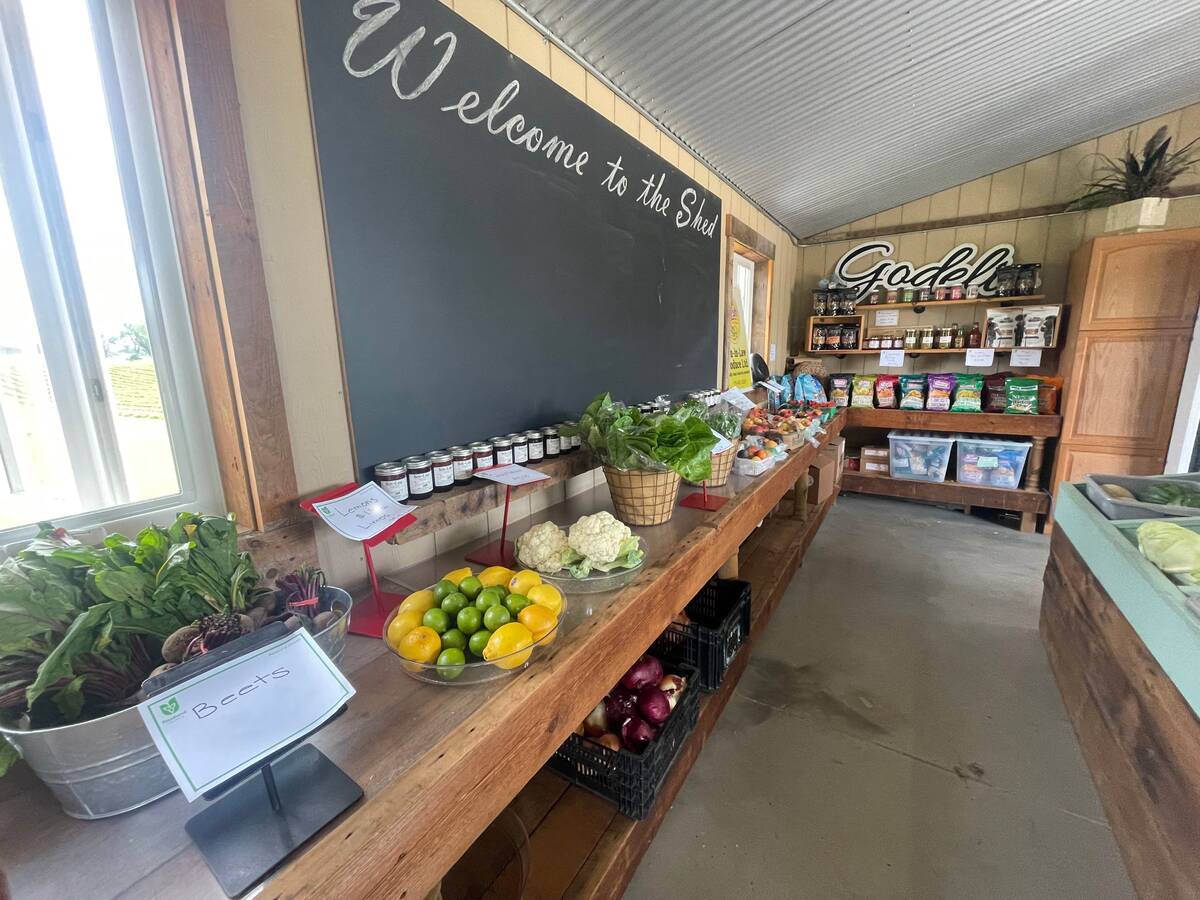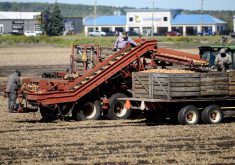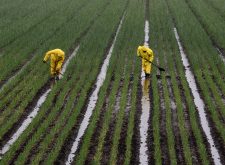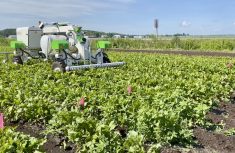As the sun kisses the 40-acre Ontario Food Terminal, there is a frenetic hum and controlled chaos on the street.
Forklift trucks and people pulling hand carts trundle between wholesale and farmers market tenants, swiftly and efficiently loading fruits, vegetables and horticultural products for the day.
“Today, about 3,000 to 4,000 people are wandering around — that’s employees, buyers, farmers, and so forth,” Gianfranco Leo, terminal manager, told a tour group from Farm and Food Care Ontario earlier this month.
Read Also

Ontario farms are a small business backbone but red tape delays and obstacles hinder growth
Farms are part of Ontario’s small business backbone, whether Ontario-grown livestock, grains or horticulture foods and farm products are bought on-farm, at a local market, or at the local store.
“On the busiest day of the market, there’s close to 5,000 people in the day.”
Why it matters: The Ontario Food Terminal has blazed a trail of fresh produce distribution innovation and remained at the forefront of the “buy local” movement since its inception.
The U-shaped building allows multiple buyers to use loading docks around a central pathway system designed for optimal efficiency in handling and distributing fruits and vegetables.
“They load up their truck and they go. We turn over the spaces a couple of times a day, at least,” said Leo. “Some buyers come to the market two or three times a day, depending on what they need.”

Farmers’ market access opens at 3 a.m. and 4 a.m. for the warehouse and, depending on where buyers come from, they are in and out by 5 or 6 a.m. to beat the traffic back to their businesses.
The terminal is Canada’s largest wholesale fruit and vegetable distribution centre and the second-largest food hub in North America because of its easy access. It’s nestled between the Queensway and the Gardiner Express in Toronto, and distributes 2.1 billion pounds of produce and horticultural products annually.
Bruce Nicholas, general manager and secretary-treasurer, said in the early 1950s government recognized the need for a centralized fruit and vegetable distribution centre for food services, retailers, corner stores, independent and chain supermarkets, farmers, and farmgate markets, florists, garden centres, landscapers and institution sectors to buy direct.
The terminal funded the purchase and development of the land by issuing $5 million in terminal bonds, which the Ontario Hydro Commission purchased. It sustains itself through rent charged to the wholesalers, office tenants and farmers and receives no provincial funding.
“We run this thing on a tight ship, pay our bills, make money, and put the money back in. We keep it running and it works,” said Nicholas. “It’s extremely important; you want to ensure a place like this exists.”
Nicholas said independent growers from across the province set the price for their products and sell to whoever they choose.
“Because (small businesses) have this marketplace, they know they can get the veggies, and independent grocers survive on the fresh veggies,” said Nicholas. “You’ll have a little guy pushing a cart, a guy in a fancy car, and a guy with a big truck. They all depend on it here, and they’re all treated the same.”

Approximately 60 to 70 per cent is Ontario product and three wholesalers import goods to sell, he said.
As Ontario’s greenhouse sector grows its acreage and year-round selection, it’s easier for wholesalers to source from local growers, he added.
Shaye Howard, of Howard Greenhouses and Produce Inc. in Norfolk County, has worked a spot on the terminal’s farmers market for most of his life. As a third-generation farmer and his son ready to step in as a fourth, he recognizes the critical role it plays for provincial producers.
“Ninety per cent of our product moves through this place,” he said. “With the flowers, not quite so much because we do have regular deliveries but with our produce, we rely on this market heavily.”
Howard brings one to three tractor-trailers of products daily from mid-April to Christmas and sells flowers, zucchini, cabbage, hot peppers, eggplant and squash. The family has two hectares of greenhouses and 400 field acres.
Despite brisk business and a solid financial plan, Howard said he ran a $30,000 deficit last year due to the skyrocketing price of inputs, packaging and energy coupled with a labour shortage.
“The people we do have are really overworked, and there’s no one to relieve them,” he said. “We will lay off a whole shift because we don’t have enough (workers) to fulfil that shift.”
Eddie Metcalfe, of Boots Farms Inc. in Scotland, Ont., works the market stall selling his own products and those of growers who can’t man a stall seven months a year.
He said it’s been challenging to get buyers to meet the increased prices, but he’s concerned about the changing market space.

He worries that, as older growers die or retire, there isn’t a younger generation to take on the farm. On the buyer side, there’s a rotation and learning curve for the up-and-comers on how to conduct business and build relationships.
“Look around. How many young farmers do you see in this market?” Metcalfe said. “Our schools aren’t promoting (careers in) farming. You’ve got to get into the schools and put it in kids’ heads. There’s a decent living in the farming business.”
Boots Farms hired three brothers in their early 20s last year. Two work on the farm and one works the market with Metcalfe, and all have to work long hours.
Howard said there’s also stress about the interest farmers will pay for pandemic-related government loans coming due in 2024. It could be upwards of nine to 10 per cent on money borrowed at two per cent if the Jan. 1, 2024, rates are applied.
For Nicholas, these issues show the critical need for the food terminal to remain just where it is.
“We’re under threat all the time. We’re under threat for when somebody says let’s get rid of this place and put a condo here,” said Nicholas. “(If that happens), you better worry about where your food supply is in this country. You’ve got to ensure you have food.”













